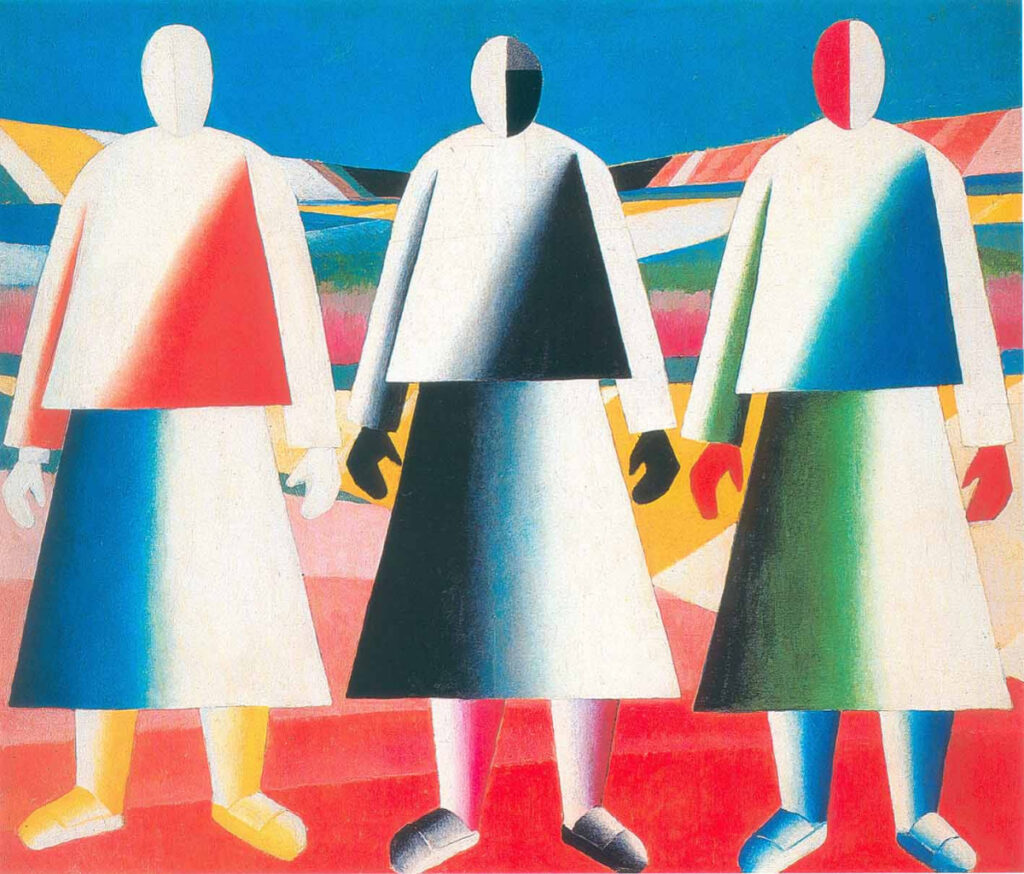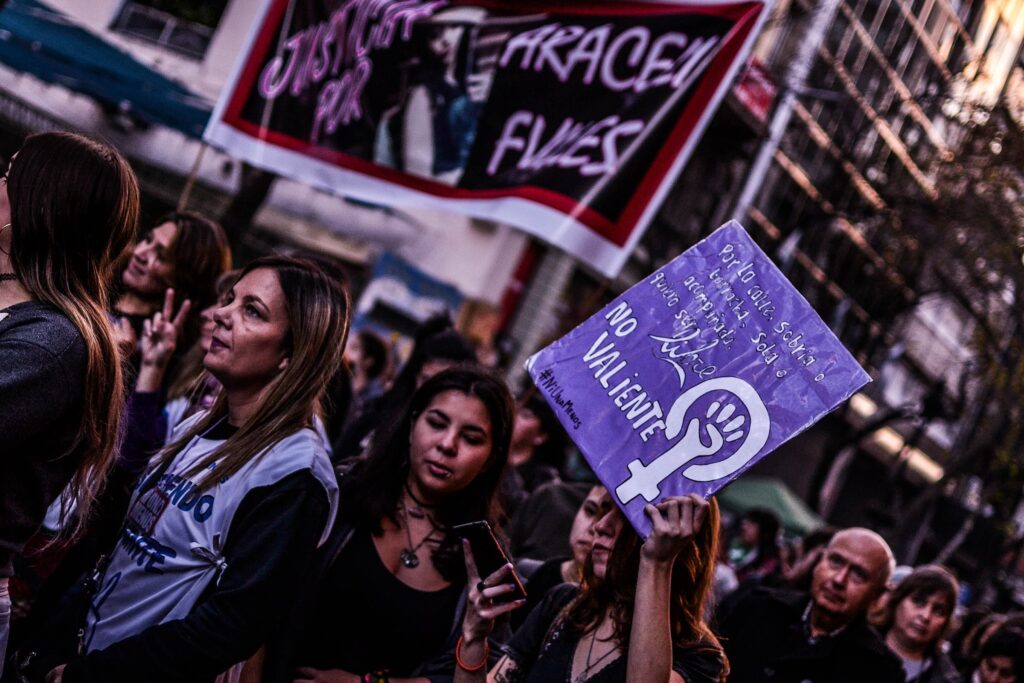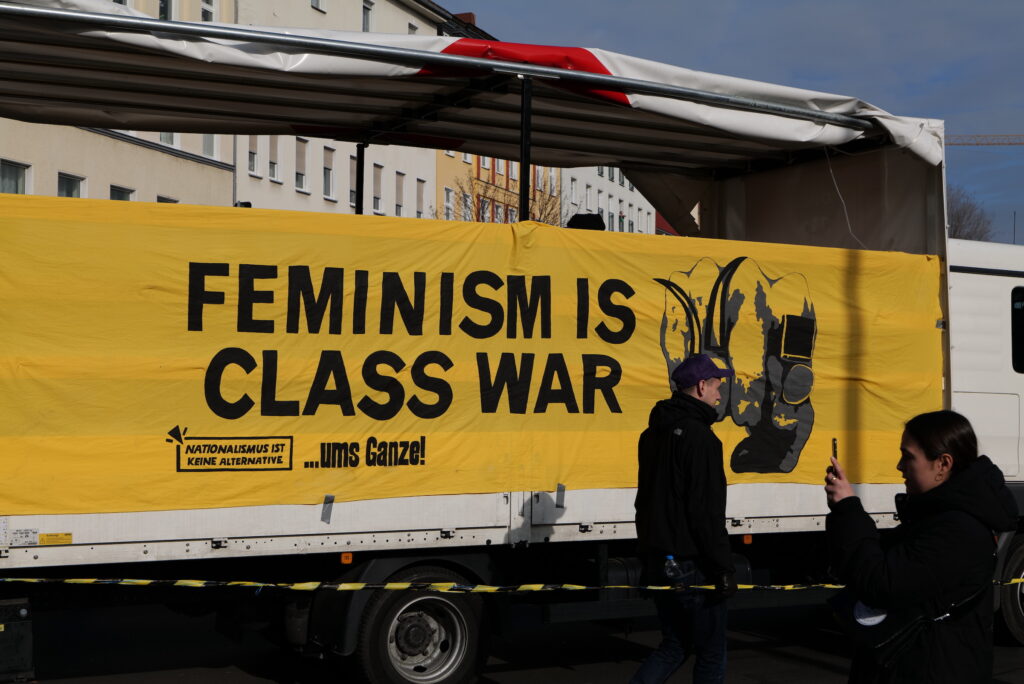The cultural and linguistic heterogeneity of Ukraine is a well-known fact, used and abused in explanations of the ongoing war. Having taken root in the early modern period in the interstitial area contested by three empires – Polish, Turkish and Russian – the Ukrainian nation was, indeed, formed through demographic processes that have left in their wake a complex multi-ethnic composition with varied legacies.
The South, conquered by the Russians from the Ottomans in the 18th century, underwent the process of ‘internal colonization’ (Etkind 2011) that consisted of cleansing the newly acquired lands of the Turkic-speaking nomads and replacing them with sedentary agrarian producers. Persecuted minorities from other countries – German Mennonites, Ottoman Serbs etc. – were invited by the imperial government and settled there. Much of the land, however, was distributed among Russian noblemen, who brought with them serfs from the core ethnic regions of Ukraine and Russia. This settler colonization moment, akin to the one that took place in Northern America at the same time, combined fertile soils with forced labor and made the Russian Empire the breadbasket of Europe.

One century later, during the Long Depression of 1873-1896, this region was colonized again. At the time, French, Belgian, and British capital was looking for profitable investment opportunities. The Scramble for Africa offered one such possibility; another option was to participate in the rapid industrialization of the Ukrainian steppes, benefiting from the generous protectionism of the Russian government. The massive influx of workforce from every corner of the empire only intensified in the Soviet era, when many if not most of industrial megaprojects were concentrated in Southern and Eastern Ukraine. This produced heavy industrial Russophone cities with no strong ethno-cultural attachments.
Territories on the right bank of the river Dnipro that today constitute northern and central Ukraine became part of the Russian Empire after the partitions of Poland in the late 18th century. To combat the influence of Polish nationalism there, Russian ethnographers promoted the idea of a separate Ukrainian ethnicity, Orthodox religion being the chief criterion versus Catholic Poles. This idea later backfired when Ukrainian romantic intellectuals turned it against the Russian imperial center itself. Following the partitions of Poland, the western-most part of Ukraine became part of the Austro-Hungarian empire, later of interwar Poland and Czechoslovakia. Hotspot of a nationalist guerilla war in the 1940s, Galicia – the former Polish-controlled part of Ukraine – became “the Ukrainian Piedmont” during the national revival of 1989-1991. Being the least Russophone region, it projected an aura of Ukrainian ethnic authenticity. Galicia’s Habsburg past allowed Ukrainian nationalists to articulate their ideology with a quest for a lost Europeanness, from which they imagined an ‘Asian’ Russia to be excluded.
I admit that this is an extremely cursory and almost caricatural snapshot of ethnic histories in Ukraine, but it is still more credible than the simplistic tale of ‘two Ukraines’, cooked up by Ukrainian nationalist intelligentsias in the early 1990s (Riabchuk, 1992). The latter was picked up by Samuel Huntington, the prophet of civilisational wars ([1996] 2011), but even, surprisingly, by an anti-nationalist anthropologist such as Chris Hann (2022). In that narrative, the population’s historical heterogeneity easily slides into an unbridgeable chasm between two civilizational different societies: pro-Western ‘Ukrainians proper’ and Russified ‘Creoles’.
How it started
Still, throughout Ukraine’s 30 years of independence there was considerable diversity in the country’s political geography and political identities, but the cardinal differences were changed together with the transformation of political struggles. Contrary to the nationalist narrative that has gradually become dominant, in the 1990s the actual key political cleavage in the Ukrainian public sphere was closer to the classic left-right binary – not least in the terms used by politicians and journalists themselves. The change toward an ethnic vocabulary came with the Orange revolution in 2004, when the center of gravity in the political field moved from the presidency to the parliament. As a result of that shift, the rivalry between oligarchic groupings that stood behind the major party-political formations had become more transparent and involved from now on open electoral struggle. It was at this point that perceived ethno-linguistic differences between East and West turned into a deepening political cleavage and ‘cultural identities’ began absorbing more conventional programmatic distinctions.
Ukrainian politics after the Orange Revolution became an arena of confrontation between two competing nationalist projects, which perceived themselves as ‘ethnic Ukrainian’ and ‘East Slavic’ (Shulman, 2005). The former put high value on the Ukrainian language and its associated ethnic identity, was implacably hostile to Russia, which it equated with the Soviet Union, and craved a liberal Euro-Atlantic integration. The latter was centered on the protection of Russian language rights, the Russian Orthodox church, and the historical memory of the Soviet people’s victory in the Second World War (which it saw as a victory of its own), and purportedly leaning towards Russia. This division gave elites an easy tool to mobilize the voter base. But at the same time, it served as a safety stop, preventing an authoritarian consolidation of power: any potential dictator backed by either bloc was easily overturned by rivals mobilizing the other “half” of the country against him. This “pluralism by default” became the hallmark of the Ukrainian political system (Way, 2015). Such pluralism was also an insurance against a neoliberal consolidation in the economic domain: the importance of the “populist” component did not allow governing elites to disembed the economy from local social and political configurations and forced all political forces to maintain the Soviet legacy of redistributive mechanisms.
The making of the supposedly identitarian cleavage thus served as a useful fix for social reproduction during the decade of economic growth between 2000 and 2010. However, as with all politico-economic fixes, this one was only temporary. Several factors contributed to its undoing in the early 2010s. First, with no inbuilt checks, the amplitude of the nationalist see-saw kept widening dangerously until the polarization reached unsustainable levels. In the parliamentary elections of 2012, the far-right (‘ethnic Ukrainian’) Svoboda party gained 10% of votes. Its popularity was propelled by the ‘East Slavic’ President Yanukovych, who was visibly aiming at orchestrating his 2015 reelection the way Jacques Chirac had done it in 2002 vis a vis Le Pen, but he must have underestimated the level of tension already accumulated in the society. Predatory activities of the Yanukovych team in the economic domain irritated both the oligarchs and the much more numerous small entrepreneurs and urban middle classes in Kyiv and the West, pushing up the nationalist vote. This coincided with the end of the commodity super cycle that had been sustaining Ukrainian economic growth between 1997-2012 (Chim, 2021). There was less and less to redistribute – especially given that in 2012 Russia, affected by the same turn of the global cycle, launched a full-scale economic attack against Ukraine, with exorbitant gas prices and countless trade wars affecting Ukrainian exporters. Starting from the second half of 2012, after the end of the stimulus from the infrastructure projects associated with the European football championship, Ukraine entered a steep recession. The Russian economic offensive marked the closure of the geopolitical interstitial space that had been vital for Ukraine: Yanukovych was forced to choose a camp while knowing that any choice would be disastrous.
All these contradictions came together in the political crisis known as the Euromaidan of 2013-2014. With Yanukovych deposed, Crimea annexed by Russia, and the Donbas plunged into war, the internal balance of Ukrainian politics became skewed beyond repair. Millions of ‘East Slavic’ voters found themselves now outside the playing field, and the ‘ethnic Ukrainian’ party became mathematically dominant (D’Anieri, 2018). This antagonism, however recent and constructed, now all but drove national politics. At the same time, however, both the ‘ethnic Ukrainian’ and the ‘Eastern Slavic’ identities that were being offered in the political arena were only weakly anchored in the worldview of the common people. Wherever one lived and whichever language one spoke most smoothly, the dominant popular attitude was an anti-political rejection of party-political games as such, rather than a firm endorsement of one side against the other. As a result of this disconnection between political society and the wider society, and pushed by the logic of the public sphere, Petro Poroshenko spent his presidential term drifting towards an ever more radical form of ‘ethnic Ukrainian’ nationalism. In the end he suffered a humiliating defeat at the 2019 elections: 73% of voters supported Volodymyr Zelenskyi, who was the veritable embodiment of the popular anti-political and anti-elitist attitude.
Once elected, however, Zelenskyi, too, began obeying the structural logic of the political field. By the autumn of 2020, it became clear to the Russian government that Zelenskyi would not accept their version of the Minsk accords, and the Kremlin began military preparations. In the lower echelons of Ukrainian society, meanwhile, the same old detachment from identarian politics persisted. For instance, one of the leaders of the 2020 miners’ strike in Kryvyi Rih, Zelenskyi’s native city, was hailed as a hero of the two hardest battles of the Donbas war. However, this did not mean much to him subjectively: in a polemic around the strike, he said he had never even considered himself a patriot (Gorbach, 2022).
How it’s going
What happened when Russia finished its war preparations and moved its troops into Ukraine? Kryvyi Rih, a stronghold of the supposedly ‘East Slavic’ elite, provides a telling example. The city’s mayor Yuriy Vilkul was elected in 2010, after Yanukovych’s presidential victory. The mayor’s son Oleksandr was a CEO of two large industrial enterprises of the city during the crucial moment of their contested transfer to Rinat Akhmetov, the richest man in Ukraine and the traditional sponsor of ‘East Slavic’ political projects. The anchoring of this family’s political power in the city was accompanied by their sponsoring of the construction of numerous Russian Orthodox churches and other religious objects, as well as monuments reinforcing the Soviet-centred version of WW2 historical memory. Local Ukrainian nationalist and liberal activists were convinced that the ruling elite would switch sides at the first sight of Russian troops.
Instead, Oleksandr Vilkul became the head of the local military administration. Shortly after the invasion, he wrote: “Dear friends, every generation has its own Brest fortress, and its own Stalingrad. We will not give up even a meter of our native land to the occupiers. Kryvbas is behind our backs, we have nowhere to retreat. Behind our backs are our families and our families’ graves… The enemy will be beaten.” These four sentences contain no less than five allusions to Stalin’s wartime speeches. The ‘East Slavic’ identity, long perceived as ‘pro-Russian’, became a mobilizing tool against the Russian invasion. The local ‘ethnic Ukrainian’ civil society has been annoyed and disoriented by this turn of events, but whatever they might think of it, the fact remains: resistance to the Russian invasion is being efficiently organized under the slogans of Soviet antifascism and Orthodox faith. The political leader who spent years opposing Ukrainian ethnonationalism and fighting the post-Euromaidan “decommunization” of urban space, has now received friendly visits from the figureheads of Ukrainian nationalism and initiated renaming all toponyms that have anything to do with Russia (which implies even greater changes then the removal of communist names).
What about the workers? None of my previously ‘apolitical’ or ‘East Slavic’ informers in Kryvyi Rih seem in doubt about the invasion. The specter of reactions ranges from patriotic emotional outbursts in group chats to joining the war effort personally. A trade union leader has demanded weapons from foreign comrades who wanted to send humanitarian aid; a displaced miner from Donetsk has left aside his skepticism about politics and enthusiastically participated in the city’s defense. Further examples abound.
The end of ambiguity?
For decades, the relation of the Ukrainian working class to politics was distant, if not actively antagonistic. Politics of all sorts and colors was perceived as the domain of corruption and lies. What has changed? Probably not much. The univocal reaction to the Russian invasion is so loud precisely because of its ‘non-political’ character: the experience of the war and the response to it are visceral, unmediated by ‘corrupting’ ideologies and politicking. Contrary to previous political events, this one feel ‘real’. It touches upon the very fabric of everyday life and does not rely on abstract reflections mediated by an intellectual class. Hence the surprising level of personal involvement.
Volodymyr Artiukh makes a similar point while comparing the Russian and Ukrainian official narratives that accompanied WW2 commemorations this year: “whereas the Ukrainian side fights iconic signs and appeals to visceral bodily experience through indexes, the Russian side relies almost exclusively on symbols devoid of any relation to lived experience” (Artiukh, 2022). Both discursive strategies exclude the possibility of building a sustainable political movement from below, but whereas the Russian symbolism is demobilizing, the Ukrainian appeal to lived reality mobilizes by generating a powerful emotional loyalty to the event. Oleg Zhuravlev and Volodymyr Ishchenko studied a similar ‘immediate politics’ in the case of Euromaidan – an enormous mobilization that had no verbalized agenda, relying instead on emotional ties between movement’s participants, and between them and their political object (Zhuravlev & Ishchenko, 2020).
Will this bond stabilize enough to create a shared common sense, thus finally constructing a ‘proper’, undivided, Ukrainian nation as a response to the war? It is tempting to anticipate a Hegelian emergence of synthesis out of two antithetic ideologies, the coexistence of which made Ukraine somewhat deficient in many narratives. However, even if such a project does become reality, what might it look like? It may either slide back into narrow ethnonationalism or develop into an inclusive national project, based on the shared war experience, EU aspirations, and a redistributive agenda. It can remain pre-rational (after all, what is nationalism if not a romantic negation of the rationality of Enlightenment?) or morph into a more legible political program.
Little is certain about it at a moment when everything – including the future geographical shape of Ukraine – depends on the war’s outcome. However, it is important to acknowledge that the war is not an independent variable, either; its course is structured by the contradictory political agency of people inhabiting the country.
Denys Gorbach is a postdoctoral fellow at Max Planck Sciences Po Centre for Studying Instability in Market Societies (MaxPo, Paris) and an adjunct lecturer at Sciences Po Toulouse. His recently defended PhD thesis is an ethnographic study of the moral economy and everyday politics of the Ukrainian working class.
This text was presented at the conference ‘New Times? Confronting the Escalating Crises of Capitalism’ in Budapest 26-27 May, organized by the Karl Polanyi Research Center for Global Social Studies and the Commission of Global Transformations and Marxian Anthropology-IUAES in cooperation with the Working Group for Public Sociology ‘Helyzet’, ‘Capitalism Nature Socialism’, ‘Focaal – Journal of Global and Historical Anthropology’, and ‘FocaalBlog’.
References
Artiukh, Volodymyr. 2022. Destruction of Signs, Signs of Destruction. Emptiness,May 9. https://emptiness.eu/field-reports/destruction-of-signs-signs-of-destruction
Chim, Sandy. 2021. The Dawn of an Iron Ore Super Cycle. Resource World Magazine. https://resourceworld.com/the-dawn-of-an-iron-ore-super-cycle/
D’Anieri, Paul. 2018. Gerrymandering Ukraine? Electoral Consequences of Occupation. East European Politics and Societies: And Cultures 33(1), 89-108.
Etkind, Alexander. 2011. Internal Colonization: Russia’s Imperial Experience. Cambridge: Polity Press.
Gorbach, Denys. 2022. The (Un)Making of the Ukrainian Working Class: Everyday Politics and Moral Economy in a Post-Socialist City. I.E.P. de Paris.
Hann, Chris. 2022. ‘The Agony of Ukraine’. FocaalBlog, 3 June, https://www.focaalblog.com/2022/03/11/chris-hann-the-agony-of-ukraine/
Huntington, Samuel P. [1996] 2011. The Clash of Civilizations and the Remaking of World Order. New York: Simon & Schuster.
Riabchuk, Mykola. 1992. Two Ukraines? East European Reporter 5(4).
Shulman, Stephen. 2005. National Identity and Public Support for Political and Economic Reform in Ukraine. Slavic Review 64(1):59–87.
Way, Lucan A. 2015. Pluralism by Default: Weak Autocrats and the Rise of Competitive Politics. Johns Hopkins University Press.
Zhuravlev, Oleg, & Volodymyr Ishchenko. 2020. ‘Exclusiveness of Civic Nationalism: Euromaidan Eventful Nationalism in Ukraine’. Post-Soviet Affairs 36(3), 226-245.
Cite as: Gorbach, Denys. 2022. “Ukrainian identity map in wartime: Thesis-antithesis-synthesis?” Focaalblog, 13 June.
https://www.focaalblog.com/2022/06/13/denys-gorbach-ukrainian-identity-map-in-wartime-thesis-antithesis-synthesis/

